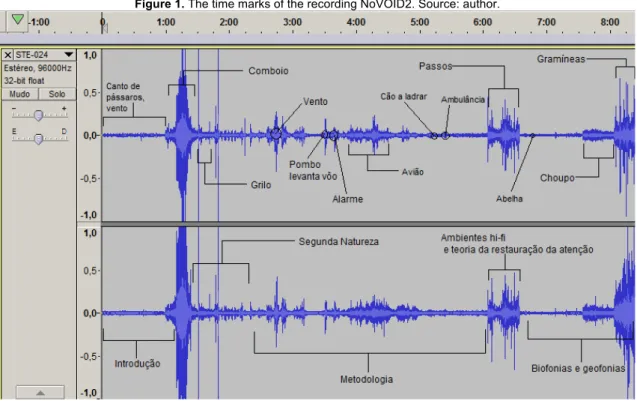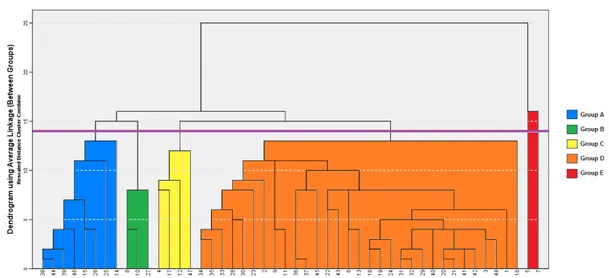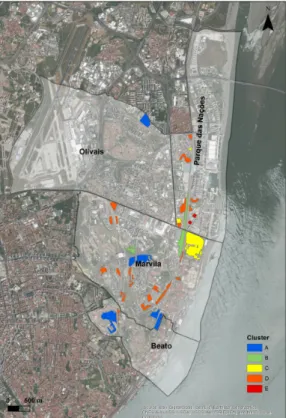NoVOID 1st Interim Seminar:
"Exploring the hidden life of urban abandoned spaces" September 21, 2017
Institute of Geography and Spatial Planning, Universidade de Lisboa
Sensing the life of vacant spaces
through soundscape recording:
reflections from the field
Daniel Paiva, CEG / IGOT-ULisboa
This is the text of a performative speech delivered at the 1st Interim Seminar of the research project NoVOID. The reading of the text should be accompanied by the recording NoVOID2 (available at https://novoidproject.bandcamp.com/track/novoid2). Check figure 1 and the time marks within the text for the coordination between sound and text.
Figure 1. The time marks of the recording NoVOID2. Source: author.
1. INTRODUCTION. VACANT LANDS AND THE URBAN SOUNDSCAPE. [Audio: 38.762196, -9.158345, 00:00-01:00]
The sounds of urban vacant lands defy our common sense understanding of the urban soundscape, which is usually associated with the sounds of humans and technologies. Most studies on urban soundscapes are themselves a by-product of such associations as they focus mostly on human-related sounds. As places with myriads of sound sources, urban soundscapes have also been traditionally defined by scholars as lo-fi, that is, spaces in which it is difficult to distinguish sounds. The lo-fi urban soundscape is often contrasted with the hi-fi soundscape of natural places where sound signals are clearer. Listening to the sounds of vacant lands defies this definition of the urban soundscape. It unfolds a seemingly not-heard and not-seen space
within the urban realm, one that illustrates that vacant spaces, like ruins, are the place we humans have left behind.
2. VACANT LANDS AS SECOND NATURE [Audio: 38.751919, -9.102001, 01:00-01:30] I’ll have to stop for a bit now, I see a train coming. [Audio: 38.711295, -9.194609, 01:30-02:10]
Urban vacant lands are not natural spaces, and they are not human spaces either. Urban vacant lands are one of the best examples on could find to exemplify Lefebvre’s concept of ‘second nature’.
Second nature refers to a state of life that is a consequence of the complete urbanization of the world. Second nature is a characteristic of the city and can be defined as a union of nature and culture, where the artificial includes and dominates the natural (Lefebvre 1991; Lefebvre 2003). ‘Second nature’ refers in general to the life of the city, as a space which is at once a product and a work, combining art and science within itself” (Lefebvre 1991: 404). Second nature combines two modes of spatio-temporal production: linear dominance and cyclical appropriations. Linear dominance is a mode of spatio-temporal production characterized by an imposition of rhythms by humans in power generally without regard for the stability of natural rhythms. Cyclical appropriation is a mode of spatio-temporal production characterized by a certain harmony between the natural and the social. Every space-time produced through linear dominance will be subject to cyclical appropriations over time, either by human or non-human agents. Urban vacant lands are spacetimes built by linear dominance which were left for cyclical appropriations.
For this reason, urban vacant lands become very important for life in the city. They are important for vegetation growth, and it has been pointed out that “lawn grass, shrubs, trees and woods on vacant land provides a variety of critical ecosystem services”, such as preventing soil erosion, improving water quality, preventing floods, or storing carbon (Deng and Ma 2015, 89; see also Kim, Miller and Nowak 2015). On the other hand, social ties can also be enhanced when these spaces become valuable public spaces where activities such as urban vegetable gardening take place (Burkholder 2012; Morckel 2015). Furthermore, these spaces are important for arthropods, birds, small reptiles and mammals that are searching for food, or for spaces to mate and to nest in (Gardiner, Burkman and Prajzner 2013).
3. METHODOLOGY
[Audio: 38.737078, -9.121333, 02:10-06:10]
Since the beginning of 2017, we in project No-Void have been trying to attune to this ‘second life’ of urban vacant lands through soundscape recording.
Our ongoing study aims at recording, classifying and mapping the soundscapes of vacant lands in Lisbon’s Eastern Zone (LEZ) and Western Zone (LWZ).
Our study so far has been composed by two phases. In the first phase, which took place in January, using the No-Void geodatabase of vacant lands in Lisbon, we selected Lisbon Eastern Zone (LEZ) as a case study for its high concentration of vacant lands in its area. LEZ is defined by Lisbon City Council as one of the five Units of Territorial Intervention (the others being the Historic Core, Central, North, and Occidental zones), and it includes four parishes: Beato, Marvila, Olivais, and Parque das Nações (CML, 2017). During this phase, we conducted a field survey with the purpose of characterising the morphology, vegetation, and animal and human occupation of the vacant lands. Following Matless (2005), we understand soundscape as consisting of sounds themselves, but also the material objects and subjects which produce them, and the social and cultural circumstances of the listening act. For this reason, we believe it was important to characterize the vacant lands themselves before mapping their soundscapes. A total of 142 vacant lands had been identified in LEZ. We then eliminated 81 lots
that had an area inferior to 3000 m2, as we considered these too small for our study. Out of remaining 59 vacant lands, we were able to visit 48.
Table 1. Variables used to characterize vacant lands.
Area Terrain Relief
3000 – 10000 m2 Waterproof (stone, cement, tar) Rugged
10001 – 20000 m2 Artificial permeable (cobbled, gravel) Flat
20001 – 40000 m2 Dirt Mixed
> 40001 m2 Vegetation
Mixed
Water Vegetation Access
Puddle Discontinuous herbaceous formations Open Brook Continuous herbaceous formations Fenced Mallard Woody and herbaceous formations
Other Predominantly Woody
Vicinity Traces of human occupation Constructions
Residential Buildings Utensils Sheds
Non-residential Buildings Clothing Urban Vegetable Garden
Road Furniture Walls
Parking Lot Litter Small Ruins
Train\Subway\Tram Graffiti Other
Park\Garden Trail
Ruins Parking
We used a set of 9 variables to characterize the vacant lands (see Table 1). With this information, vacant lands of LEZ were classified through a cluster analysis and data was mapped. We identified 5 clusters of vacant lands. In this stage, we also conducted exploratory field recordings in selected vacant lands. We conducted 5 minute audio recordings in wav format (24-bit, 96 kHz) using the Zoom H4nsp recorder. After classifying the vacant spaces, we proceeded to analyze their soundscapes. We conducted 5 minute audio recordings in 21 vacant lots belonging to different clusters, which in total amount to 105 minutes of recordings. Our analysis consisted in classifying the sounds in the various recordings of each cluster according to the presence and intensity of geophonies, biophonies and anthrophonies. This analysis led us to narrow the cluster into three groups of vacant spaces.
In the second phase, we repeated the same survey for Lisbon’s Western Zone. Lisbon’s Western Zone is composed by four parishes: Ajuda, Alcântara, Belém, and São Francisco Xavier. The results of this survey are still under analysis. We also conducted several longer field recordings (between 10 and 20 minutes) both in Lisbon’s Western Zone and Lisbon’s Eastern Zone. What you have been hearing along with my voice are some of the recordings we have made. Our objectives in the near future are to georeference these recordings and make them available to the general public.
Figure 3. Map of the clusters of vacant spaces. Source: project NoVOID.
And so I have told you our little journey so far. In the remaining of this presentation, I would like to share with you some of the reflections that this field experience has provoked in us.
4. HI-FI, SOUNDMAKING, AND ATTENTION RESTORATION THEORY [Audio: 38.737392, -9.109128, 06:10-06:40]
The sounds of urban vacant lands are often hi-fi, i.e. sounds are clear and it is easy to identify sound sources. Westerkamp has argued that the clarity of the hi-fi soundscape, that she identifies as the soundscape of natural spaces, sparks a desire to listen, and with that, a desire to make sounds also emerges. In these spaces, she argues that:
(…) we become aware of the fact that we are soundmakers simply by moving through the soundscape. Many urban people are unaware of themselves as soundmakers on this basic a level. Yet our own sounds, such as walking, breathing, talking, and so on, tell us, via the feedback process, where and who we are in that place. We may even experience our sounds as being too loud. (1988: 15) Westerkamp illustrates with words what the recording of me walking through a vacant lot illustrates with sound. The body, the presence of my body to myself, so often forgotten among the plethora of stimuli of urban spaces, is rendered hearable. In recent years, attention restoration theory has highlighted the benefits of experiences of nature. In the words of Lennon, Douglas and Scott (2017), attention restoration theory:
“suggests that people exposed to high stimulus environments that require extended periods of ‘direct attention’ suffer mental fatigue and reduced attention span, which can in turn lead to reduced physical and mental functioning. (…) The theory [also] suggests that carefully designed environments can provide ‘restorative settings’ with specific qualities and components that are beneficial for restoring physical and mental capabilities.” Urban green spaces have been usually pointed as having such ‘restorative settings’. The hi-fi soundscape of urban vacant lands could also provide such settings.
[Audio: 38.737392, -9.109128, 06:40-07:40]
The soundscapes of urban vacant lands bring us second life. They tell us about an ongoing doing in places that have been delimited, zoned, built and cultivated by humans, but that does not need humans. Places that were built through processes of linear dominance and later abandoned, and thereafter left to the cyclical appropriations of rain, wind, sun, birds, insects, small mammals, and perhaps also human misfits and explorers.
[Audio: 38.762196, -9.158345, 07:40-08:30]
Listening to the soundscapes of vacant urban lands allows us to attune to subtle differences between things that surround us that often go unnoticed. The sound of the wind multiplies into the sounds of the wind. Wind passing through an Alamo tree, as we are hearing now, is very different from wind passing through tallgrass, as we will hear in moments. Likewise, we can distinguish the songs of different birds and insects. We can attune to a multiplicity of non-human life that occupies urban space and finds sanctuary in the spaces that humans have forgotten. Sounding urban vacant spaces unfolds the life of these diverse ecosystems.
[Silence]
6. __________________________
The recordings have finished now. We are now left with the silence of our own thoughts about this experience. Very dramatic. I hope you have appreciated this presentation, which I admit it was more similar to a stream of consciousness than a cohesive scientific presentation. I also hope it will provoke an interesting discussion later in the afternoon. I am very open to your comments and questions, which I will add up to my own.


